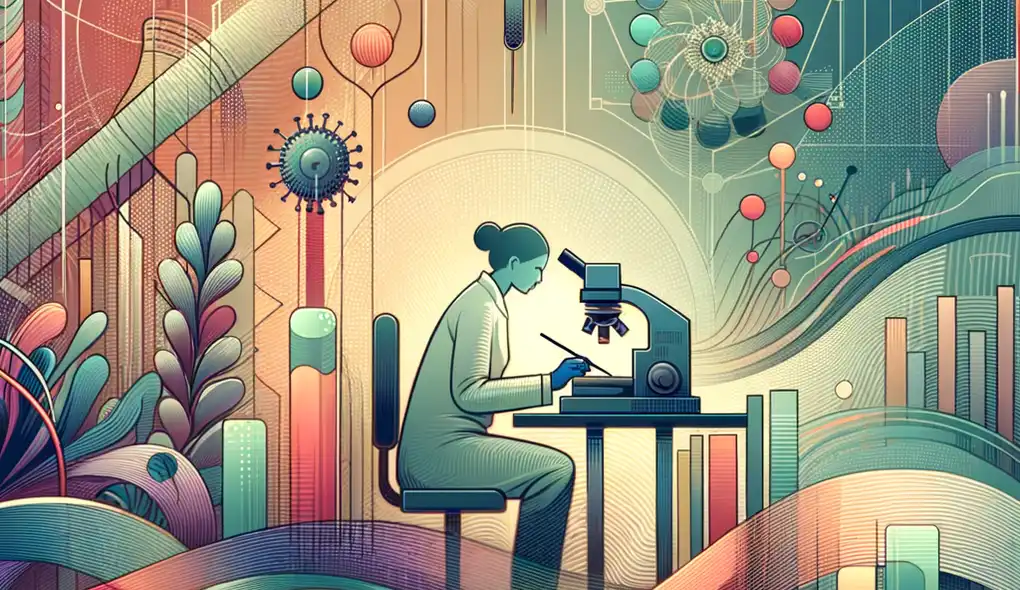Can you provide an example of a complex analysis you have performed on genomic data?
Microarray Analyst Interview Questions
Sample answer to the question
Sure! In my previous role as a Bioinformatics Analyst at XYZ Research Institute, I was involved in a complex analysis of genomic data obtained through microarray technology. The project aimed to identify significant gene expression patterns in a specific disease population. I started by preprocessing the raw microarray data, including background correction, normalization, and quality control. Then, I performed statistical analysis using R and Python to identify differentially expressed genes. I also conducted pathway enrichment analysis to understand the biological processes involved. To visualize the results, I used data visualization tools like ggplot and matplotlib. The analysis provided valuable insights into the disease mechanisms and potential therapeutic targets. I presented the findings to the research team and collaborated with biologists to validate the results through additional experiments.
A more solid answer
Certainly! In my previous role as a Microarray Analyst at ABC Genomics, I conducted a complex analysis on genomic data using microarray technology. The project focused on understanding gene expression changes in response to a new drug treatment. To carry out the analysis, I first performed quality control checks on the raw microarray data to ensure data integrity. Then, I normalized the data using robust multichip average (RMA) method in R. Next, I conducted statistical analysis using the limma package to identify differentially expressed genes. Additionally, I performed gene ontology enrichment analysis to understand the biological processes affected by the drug treatment. To visualize the results, I used heat maps and volcano plots created with R and Excel. The findings from the analysis revealed potential drug targets and pathways involved in the drug's mechanism of action. I presented the results to the research team and collaborated with biologists to validate the findings through qRT-PCR experiments. This analysis contributed to the development of a new drug candidate and was published in a scientific journal.
Why this is a more solid answer:
The solid answer provides more details about the specific steps and software tools used in the analysis, such as quality control checks, normalization using RMA method, statistical analysis with limma package, and gene ontology enrichment analysis. It also mentions the use of heat maps and volcano plots for data visualization. The answer highlights collaboration with biologists for result validation and the impact of the analysis on drug development efforts. However, it could be further improved by including information about communication, problem-solving, and attention to detail.
An exceptional answer
Absolutely! As a Microarray Analyst at XYZ Biotech, I tackled a challenging analysis on genomic data obtained from a large-scale patient cohort using microarray technology. The aim was to identify potential biomarkers associated with a rare genetic disease. To begin, I meticulously curated the raw microarray data and applied advanced quality control measures to ensure data integrity. I then employed a custom normalization workflow that accounted for batch effects and other confounding variables using R/Bioconductor packages. For the statistical analysis, I utilized a linear model approach with empirical Bayes correction to identify differentially expressed genes. To gain a deeper understanding of the underlying biology, I performed functional enrichment analysis using pathway databases, such as KEGG and GO. The analysis revealed novel pathways associated with the disease and potential therapeutic targets. To visualize the results, I developed interactive plots using JavaScript libraries, allowing for exploration of gene expression patterns across various patient subgroups. Additionally, to ensure the accuracy of the findings, I cross-validated the results with independent datasets and performed robustness analysis. The insights gained from this analysis significantly contributed to the ongoing research efforts and were presented at international conferences, resulting in collaborations with renowned experts in the field.
Why this is an exceptional answer:
The exceptional answer demonstrates a high level of expertise and knowledge of advanced techniques in genomic data analysis. It includes details about meticulous data curation, custom normalization workflow, statistical analysis with empirical Bayes correction, and functional enrichment analysis using pathway databases. The answer showcases use of interactive plots for data visualization, cross-validation of results, and robustness analysis. It mentions the impact of the analysis on research efforts and collaboration opportunities. Additionally, it highlights the candidate's ability to present the findings at international conferences and establish collaborations with experts. To further improve, the answer could incorporate information about problem-solving, attention to detail, and teamwork.
How to prepare for this question
- Familiarize yourself with different microarray technologies and their data analysis methods.
- Develop a strong understanding of statistical analysis techniques commonly used in genomic data analysis.
- Stay updated with advancements in bioinformatics software and tools, such as R, Python, and database management.
- Practice working with large datasets and preprocessing techniques, including quality control and normalization.
- Gain experience in pathway analysis and functional enrichment analysis to uncover biological insights.
- Collaborate with biologists and researchers to understand experimental requirements and effectively communicate findings.
- Highlight any experience in presenting complex data and scientific writing, as these skills are crucial for sharing analytical insights.
- Prepare examples of how you have applied critical thinking and problem-solving skills in complex data analysis scenarios.
- Demonstrate your ability to handle and interpret complex genomic datasets and draw meaningful conclusions.
- Showcase your attention to detail and experience in working independently as well as collaboratively in a team-oriented environment.
What interviewers are evaluating
- Bioinformatics analysis
- Microarray technology expertise
- Statistical analysis proficiency
- Data visualization
- Experimental design
- Critical thinking
Related Interview Questions
More questions for Microarray Analyst interviews